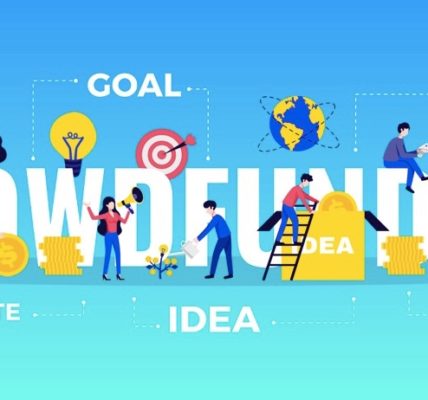Business Best Practices
 Mr Milz overhauled
Mr Milz overhauled
this 100 years-old grandfather clock.
Despite having an unacceptably high unemployment rate, the US manufacturing sector has over 600,000 unfilled jobs. This is due to the fact that our educational system isn’t producing graduates with the skills that are sought by employers.
Nancy Hoffman, author of the book Schooling in the Workplace: How Six of the World’s Best Vocational Education Systems Prepare Young People for Jobs, argues that the United States should adopt a European-style education system, in which students in their last two years of high school have the option of participating in highly structured workplace apprenticeships that involve working for pay several days per week, and spending the rest of the time in the classroom. This system is known as vocational education and training or VET.
So what are VET’s advantages? Meet August Milz, a product of Germany’s VET system. As a youngster, Mr. Milz spent two years at a clock school in Germany, and then served as an apprentice at a clock manufacturing company. He went on to run a number of successful clock repair shops, and is currently the owner of A M Clock Repair SVC, Inc
Following is a recent interview with Mr. Milz. It describes how he ultimately found his calling through VET.
***************************************************************
How did Germany develop such a strong vocational education and training (VET) system?
Unlike the US, Germany doesn’t have natural resources that are the basis of the economy. In Germany, the economy is based on production—not on the stuff that comes out of the ground. The government supports—and the system supports—learning a trade, doing something, building, working. The whole system goes back to the Middle Ages. Working in a trade was highly valued as only honorable people were eligible to participate. During this time, Germany wasn’t even a national entity; it was a political entity. In contrast, in the US, the only entity that supports education for tradesmen are the unions. For example, carpenters and electricians have to be licensed, which requires that they are able to demonstrate that they have been properly trained and educated in their specific trades.
What made you decide to go into the clock field?
Two things. One was that my schooling for higher education was interrupted because of World War II. When things normalized again, I was told that I was too old to pick up where I left off. My father had a small clock factory before the war that was closed during the war. My grandfather was a clockmaker as well..so it was a family tradition. I grew up in manufacturing.
What type of vocational education and training (VET) was available for someone wishing to learn about the clock trade?
I grew up in Schwenningen. a city located near the Black Forest where all of the major clock companies were located. There was a clock school in town. The institution had a three-year educational program involving a parallel apprenticeship. Students went to school and worked at the same time.
After going to school and apprenticing, a student got their diploma. But the diploma didn’t entitle them to own their own shop, or teach. The students had to work another 6 years under a Master, learning how to design their own mechanisms. Then they had to take an exam, which—if they passed—enabled them to become a Master. Only then could they own their own shop, or teach. That’s how the system worked.
What was your personal experience with the program?
While attending school, I worked in a factory that had a large machine shop where they made the clock’s internal mechanisms. I learned about the workings of the machinery, and how to set them up. Eventually, I was put in charge of production. As a result of this experience, I completed the entire program—schooling plus apprenticeship—within 2 years.
Does Germany still have clock schools?
Yes, it does. A couple of months ago I got a call from my nephew. His son is starting clock school, beginning as an apprentice at Junghans, where he works at the company three days a week, and then goes to school for 2 days a week. He will continue with this schedule until he finishes his apprenticeship.
In terms of the clock industry, how should VET be applied here?
There are two aspects to consider. One is designing new mechanisms; the other is repairing existing clocks. The education for each category is different. We don’t need Masters in the US, because —although the US used to be a great manufacturing center—today clocks are made in other countries, and then imported to the States. A Master learns how to design the mechanism, calculate the number of gears, and all that. There is no need or market for that. The need is for repair.
What should be done in terms of US vocational education?
For over 100 years clocks have been imported here. There are countless millions of clocks, but there is nobody to take care of them. That’s why I decided to come here to open up repair shops. There is definitely a need for a clock repair and maintenance school in the US; however, any new program must also include working as an apprentice.
August, Thank you!
[My comment: There are similarities between the plight of Doug Oberhelman, CEO of Caterpillar, whose company is unable to find qualified factory workers, and August Milz, owner of A M Clock Repair SVC, who can’t find properly-trained, clock repair people. Both individuals run businesses that are constrained by a lack of qualified workers. This is ironical, in light of our high unemployment rate.
Only by reforming our educational systems, can we hope to solve this problem. We must develop more meaningful partnerships between business, academia, and government. Ultimately, the goal should be to integrate school and work experience in a specific career area, ending the distinction between academic and vocational preparation.]
Stephen Covey (1932-2012), the business self-improvement master of our times, died last week. He authored The 7 Habits of Highly Successful People, a book that has sold over 6 million copies.
In addition to having read several of Covey’s books, I saw him present at a Lessons of Leadership conference. Here are the two most important take-always from his body of work:
Lesson 1: Point Your Compass Towards True North
In his book First Things First, he differentiated between the clock and the compass. The clock represents our commitments, appointments and activities. In contrast, the compass represents our vision, values and direction. Angst occurs when there is a gap between what we do, and what is most important in our lives.
This distinction painfully struck home. Once, I was scheduled to attend a Board meeting during a day when my 4-year old son had to undergo major surgery. I elected to attend the Board meeting, rationalizing my decision by telling myself that my wife and father-in-law were at the hospital.
Although the surgery was successful, I regret my decision, realizing that I did not put First Things First, which is to be there for my son. Had I spoken up, the Board meeting could have been delayed.
Lesson 2: Invest in the Goose That Lays the Golden Egg
This lesson is based on one of Aesop’s fables. A farmer and his wife had a goose that laid a golden egg every day. They assumed that the goose had a great nugget of gold in its inside, so they killed it. They discovered that the goose was no different from other geese. Instead of becoming rich, the coupled deprived themselves of the gain of which they were assured day by day.

Covey argued that we must invest energy in increasing our productivity. Using the metaphor of a saw, he suggested that we must sharpen the saw, otherwise the blade becomes dull. And a dull blade results in reduced output.
There are many ways of nurturing the goose. In a previous post, I described how playing bridge enhances one’s memory and mathematical skills. Is it surprising that Warren Buffet and Bill Gates are avid players? In tennis, I know that if I fail to do strengthening exercises, pulled muscles are the end result. My physical therapist can attest to that!
In terms of business, at Frito Lay’s Orlando, Florida plant , the largest inventory investment is not in the potatoes, corn oil and salt seasonings that are needed to make the company’s snack products. Rather, the biggest inventory item is in parts that are required to maintain the expensive machinery. Management knows that the costs of production downtime far outweigh the investments in inventory that are necessary to keep the machines in good condition.
Conclusion
Some of Covey’s notions are commonsensical—they will not put him at the table with the pantheon of self-improvement thought-leaders. For example, his 7 habits include advocating “being proactive; begin with the end in mind; think win-win, etc.”
But the ideas of nurturing the Goose That Lays the Golden Egg, and setting ones compass on true north, will stand the test of time.
“The dwarf sees farther than the giant, when he has the giant’s shoulder to mount on.”
—Samuel Taylor Coleridge, in The Friend (1828)
 Every business executive and aspiring entrepreneur should read Steve Jobs, a biography by Walter Issacson. It provides a frank, unadulterated look at the career of the greatest business executive in our time. Consider this. Job’s founded Apple in 1976, which began as a 4-person operation in his father’s garage. By 2011, it became the world’s most valuable company by market capitalization. I agree with Isaacson’s contention that Jobs belongs right up there in the pantheon next to Ford and Edison.
Every business executive and aspiring entrepreneur should read Steve Jobs, a biography by Walter Issacson. It provides a frank, unadulterated look at the career of the greatest business executive in our time. Consider this. Job’s founded Apple in 1976, which began as a 4-person operation in his father’s garage. By 2011, it became the world’s most valuable company by market capitalization. I agree with Isaacson’s contention that Jobs belongs right up there in the pantheon next to Ford and Edison.
There are many takeaways from this book. One of the “lessons learned” is that Jobs stood on the shoulders of others in order to achieve his phenomenal success. We all need mentors, and Steve Jobs needed them more than most. Given up for adoption by his biological parents, he spent much of his life looking for a father figure who he could emulate:
Personal Role Models
- Paul R. Jobs, his adoptive father, who enjoyed refurbishing and selling used cars after work. Steve spent hours by his father’s side, “eager to hangout with his dad.” Job’s dad was the first person to provide him with exposure to electronics. And the rest is history.
- Kobun Chino, a Soōtoō Zen master, who served as Steve Job’s spiritual guru. Job’s longtime teacher presided at Job’s wedding. For Jobs, Zen represented more than a philosophy of life; it also infused his thinking about design, which he felt ought to embrace beauty, minimalism and simplicity.
Business Role Models
- Arthur Rock, a venture capitalist and early Apple Board member, took Jobs under his wing. However, the relationship was about more than just business. “Arthur had been like a father to me,” said Jobs. Rock and his wife Toni hosted Jobs in Aspen and San Francisco. He also taught Jobs about opera.
- Mike Markkula, Jr., an angel investor and Board member of Apple, was the third employee of the company. Like Rock, he also became a father figure to Jobs. Markkula taught Jobs how to market, sell and package a product. Markkula oversaw Jobs growth and maturation. He served as Apple’s CEO from 1981 to 1983.
Ironically, Rock and Markkula eventually distanced themselves from Jobs. Here is the story. In 1983, Jobs recruited and hired John Sculley, President of PersiCo, to become Apple’s CEO. Two years later, Jobs had second thoughts. He and Sculley had a showdown before Apple’s Board of Directors. Both Rock and Markkula sided with Sculley. Years later, in recounting this event, Jobs broke down in tears. He felt betrayed by his business father-figures, much in the same way that he felt abandoned at birth by his biological father.
We all need shoulders to stand on, particularly during the formative phases of our careers. The poet John Donne said it best: “No man is an island.”
At the age of 16, I was inspired by Dr. Winters, a visiting minister who had a daytime job as a consultant to G.M. He was an outstanding speaker, and imparted numerous, fundamental life-lessons. He piqued my curiosity about business. Many years later, I worked with an external company consultant, A.K. His ideas brought about significant changes within the organization where I was employed. From him, I learned about the power of ideas, and how to present them well. As a result, my career direction changed from management to consulting.
What are your passions? Do you have a coach/mentor/boss/friend who you can learn from? Whose shoulders are you standing on in order to achieve the goals that you seek?
When Debbie and I realized that the temperature would exceed 70° F, we took the afternoon off this past Tuesday. It was a beautiful fall day. Living in the Chicagoland area, we were aware that this might be the last time for playing golf, while enjoying the warm weather.
We gathered our bags and drove 20 minutes to the Indian Boundary public golf course, which borders the Des Plaines River. It was a glorious day, and the trees displayed their magnificent colors. We walked, talked and took-in nature. How delightful!
In prehistoric times, southern Native Americans traveled on the Des Plaines River, and they met with northern tribes and traded with them for copper. At the 7th hole, I took a picture of a pond, which reflected back the clouds and the trees’ vibrant colors. I wondered: 7,000 years ago were the Indians as awestruck as I was by this scene?

Later, other tribes, including the Potawatomis, traversed the trails and waterways in this area, where they engaged in hunting, trapping, trading and war parties. My father unearthed evidence of their presence. As a child, he found–within a mile’s distance from the river–Indian arrowheads in a field,
 Arrowheads found near the Des Plaines River
Arrowheads found near the Des Plaines River
As we drove home, Debbie and I both realized that this experience will soon become a fond—but distant—memory come January when the mercury drops and the cold northern winds blow through Chicago. This realization made us treasure the experience even more.
An ancient philosopher once said that the good life involves fulfilling ones spiritual, mental, social and physical needs. Connecting with nature and my life-partner on a glorious autumn afternoon is as good as it gets.
What do you do in the fall to renew your spirit?
When a creative individual masters one field, and then uses what they know to think about another, often truly original ideas–or mind-bending products–are the result. The story of Steve Jobs is a case in point.
 A Woman Reading an ebook on an Ipad 2
A Woman Reading an ebook on an Ipad 2
The Apple CEO dropped out of Reed College, but he hung around campus for 6 months, often sleeping on the floors in dorms where his friends lived. Jobs used the time to attend classes that interested him. During one term, he took a calligraphy seminar, a subject wherein Reed College excelled.
Years later, when Jobs oversaw the design of the first iMac computer, he commented that all of the calligraphy instruction came back to him, so much so that he incorporated it into the iMac’s software. The end result was the development of the first computer to contain a variety of typefaces and proportionately spaced fonts, a hallmark of the Apple brand. Because Windows PC manufacturers’ copied many of Apple’s designs, had Jobs not dropped in on that class, none of today’s computers would have all of the exciting multiple typefaces.
Job’s innovativeness is shown in the progression of breakthrough Apple products: iMac, iPod, iTunes, iPhone, and now, the iPad. The original iPad came to US stores on April 3, 2010. In less than a year, it has reached $1 billion in revenue, an achievement that few products have ever attained.
Not content with resting on his laurels, Job’s spearheaded the re-design of the iPad. The new version, known as the iPad 2, is being released in stores today. As described in the New York Times, the salient design improvements include more thinness, less weight, more integration, greater beauty—and over 65,000 apps.
In conclusion, technological companies like Apple do require engineers who are experts in science and math. But creativity in product innovation is not based on science and math alone. As described in the book The World is Flat, creativity is about making connections between history, art, politics and science.
Are you a creative manager, designer or executive? How do you connect the dots?


